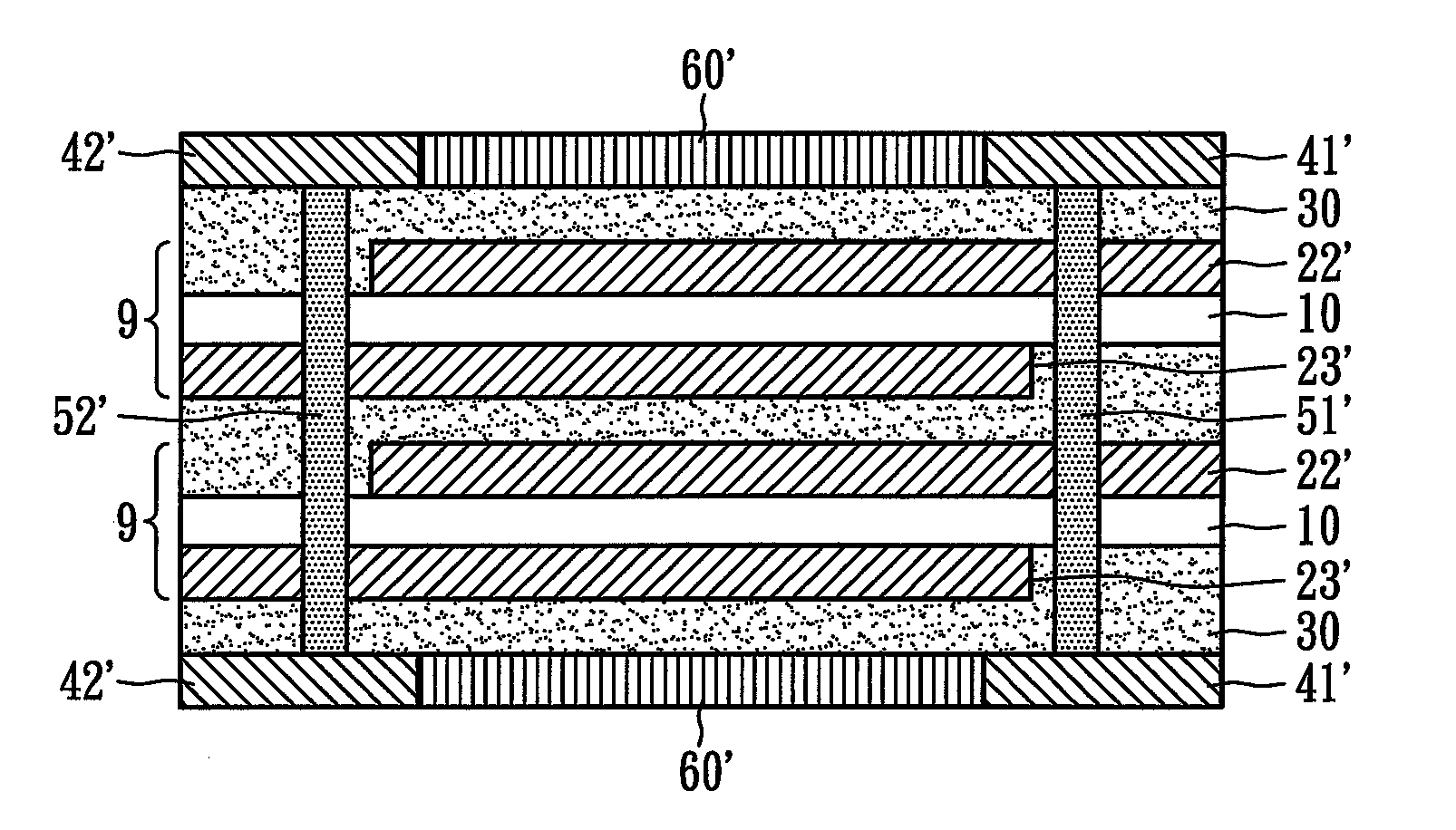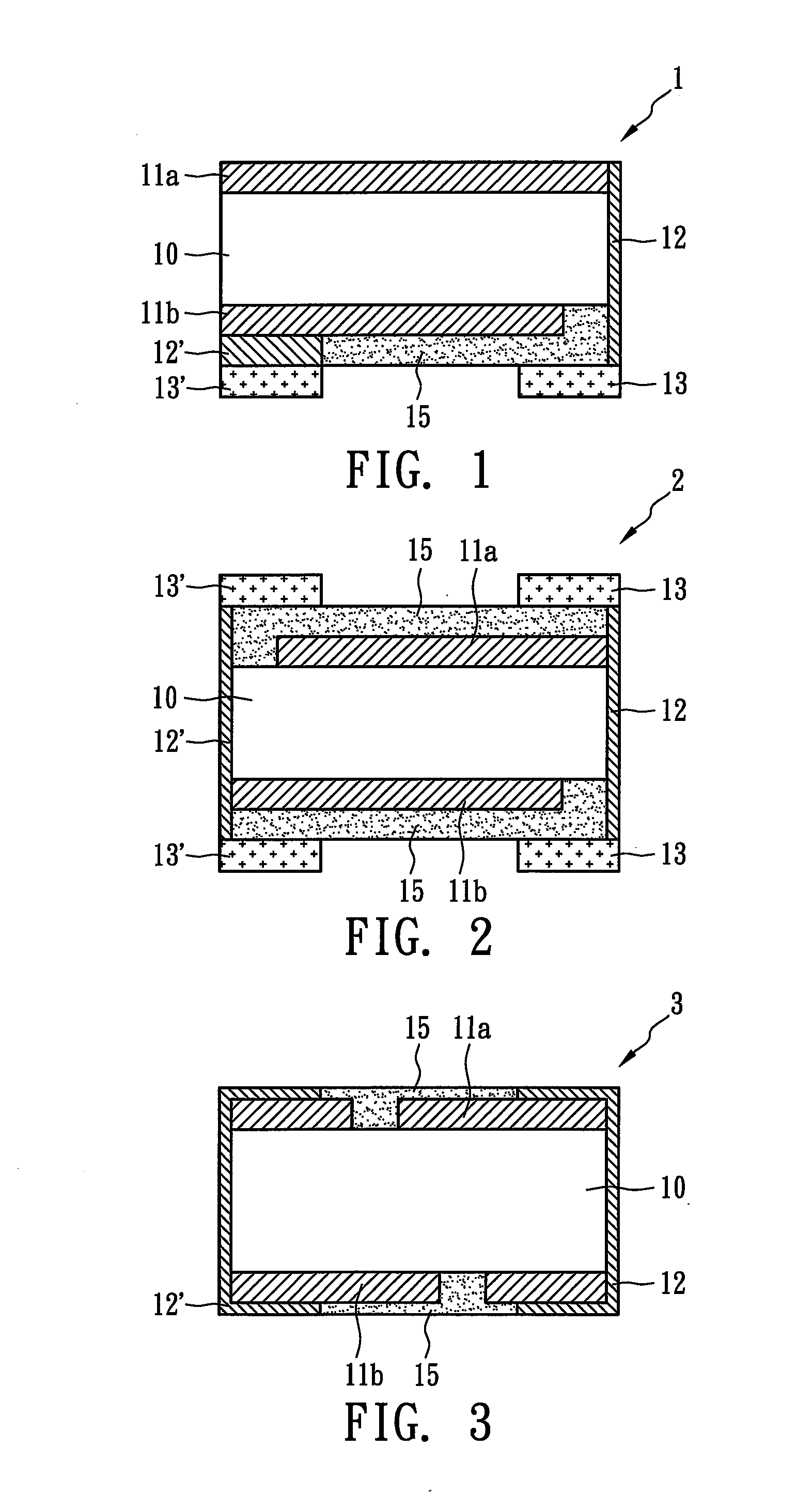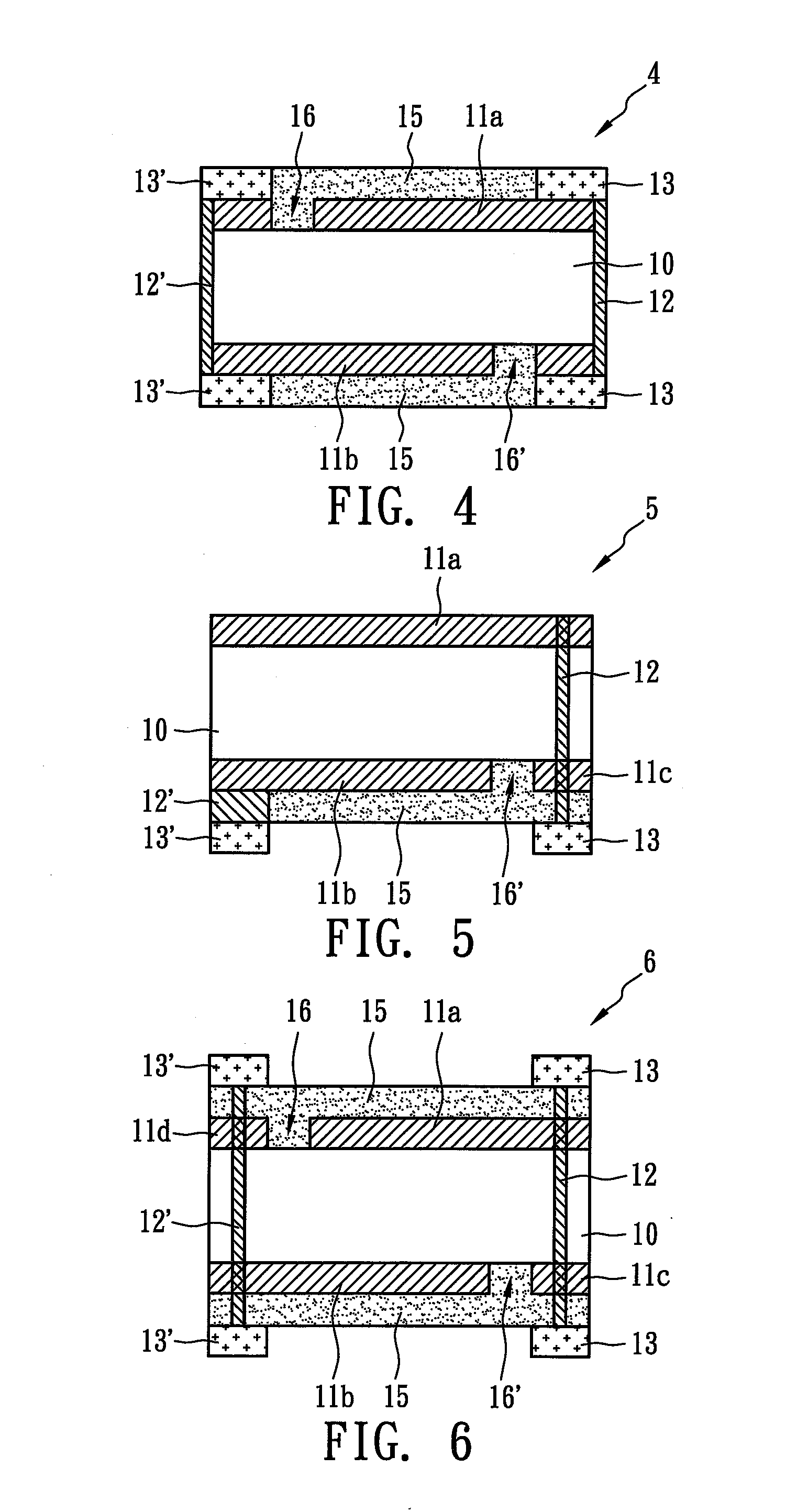Surface-mounted over-current protection device
a protection device and surface mount technology, applied in emergency protective arrangements, cell components, cell components, etc., can solve the problems of reducing the performance of the smd device, and reducing the resistance of the conductive composite. , to achieve the effect of low resistance, low resistance and high hold curren
- Summary
- Abstract
- Description
- Claims
- Application Information
AI Technical Summary
Benefits of technology
Problems solved by technology
Method used
Image
Examples
first embodiment
[0021]FIG. 1 illustrates the surface-mounted over-current protection device 1, which is suitable to adhere to a substrate (not shown). A first metal electrode 13 and a second metal electrode 13′ corresponding to the first metal electrode 13 are usually located on the same plane. The surface-mounted over-current protection device 1 could be designed to contain only one electrode set comprising the first metal electrode 13 and the second metal electrode 13′ such that only one surface thereof could adhere to the surface of the substrate. The design in FIG. 1 is usually applied to a narrow space and meets the requirements of one-way heat conduction or one-way heat insulation. In the current embodiment, the first metal electrode 13, a first metal conductor 12, a first metal foil 11a, a PTC material layer 10, a second metal foil 11b, a second metal conductor 12′, and the second metal electrode form a conductive circuit to connect an external device (not shown) and a power source (not show...
third embodiment
[0023]FIG. 3 illustrates the surface-mounted over-current protection device 3, in which the first metal conductor 12 and the second metal conductor 12′ are developed by metallic electroplating on surfaces of the surface-mounted over-current protection device 3 to form wrap-around electrical conductors. In addition, the first and the second metal conductors 12 and 12′ could be connected to the first and the second metal foils 11a and 11b and metal electrodes (not shown) by soldering, electroplating, and then reflow or heat-curing. In the current embodiment, the first and the second metal conductors 12 and 12′ can also be formed by first forming micro holes and then plating-through-hole or metal filling.
fourth embodiment
[0024]FIG. 4 illustrates the surface-mounted over-current protection device 4, in which the first metal conductor 12 and the second metal conductor 12′ combine the first metal electrode 13 and the second metal electrode 13′, respectively, to directly form metal electrodes. The first metal foil 11a is formed by etching and is electrically insulated from the second metal electrode 13′ and the second metal conductor 12′ by an etching line 16 (or etching area). Similarly, the second metal foil 11b is formed by etching and is electrically insulated from the first metal electrode 13 and the first metal conductor 12 by an etching line 16′ (or etching area).
PUM
| Property | Measurement | Unit |
|---|---|---|
| particle size distribution | aaaaa | aaaaa |
| resistance | aaaaa | aaaaa |
| width | aaaaa | aaaaa |
Abstract
Description
Claims
Application Information
 Login to View More
Login to View More - R&D
- Intellectual Property
- Life Sciences
- Materials
- Tech Scout
- Unparalleled Data Quality
- Higher Quality Content
- 60% Fewer Hallucinations
Browse by: Latest US Patents, China's latest patents, Technical Efficacy Thesaurus, Application Domain, Technology Topic, Popular Technical Reports.
© 2025 PatSnap. All rights reserved.Legal|Privacy policy|Modern Slavery Act Transparency Statement|Sitemap|About US| Contact US: help@patsnap.com



